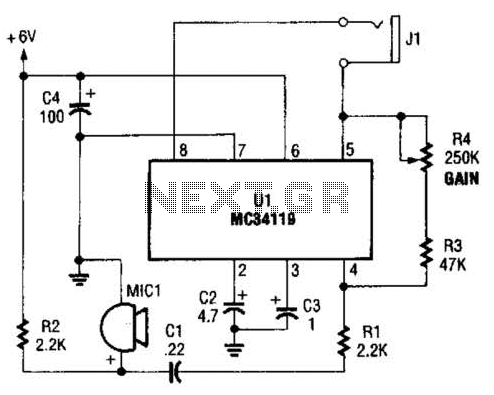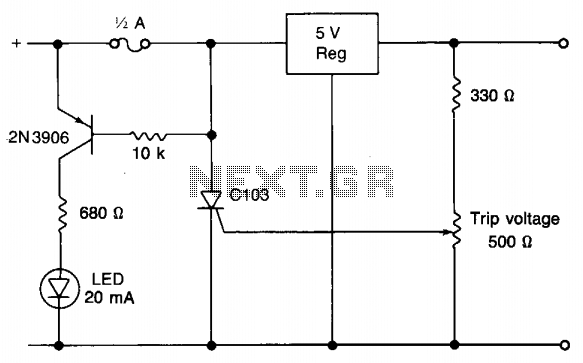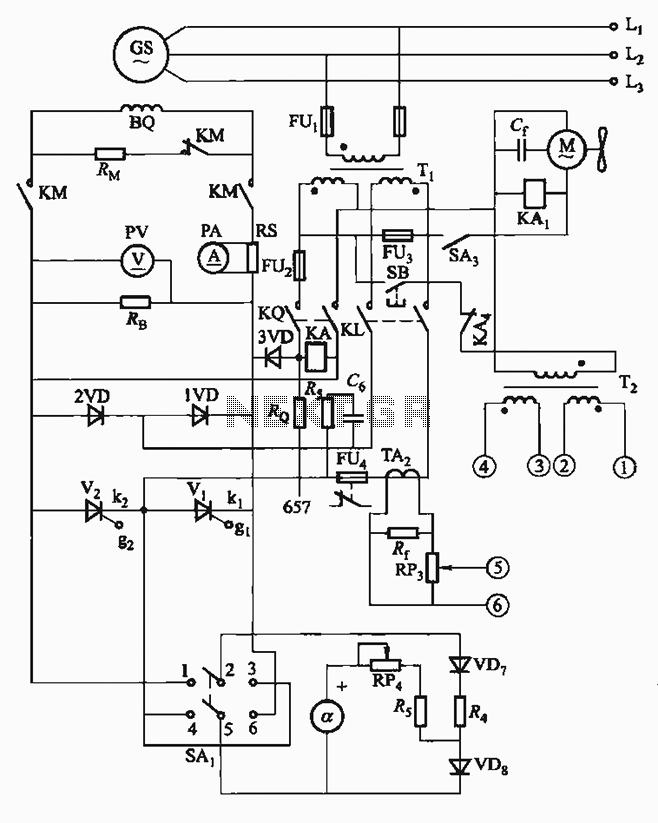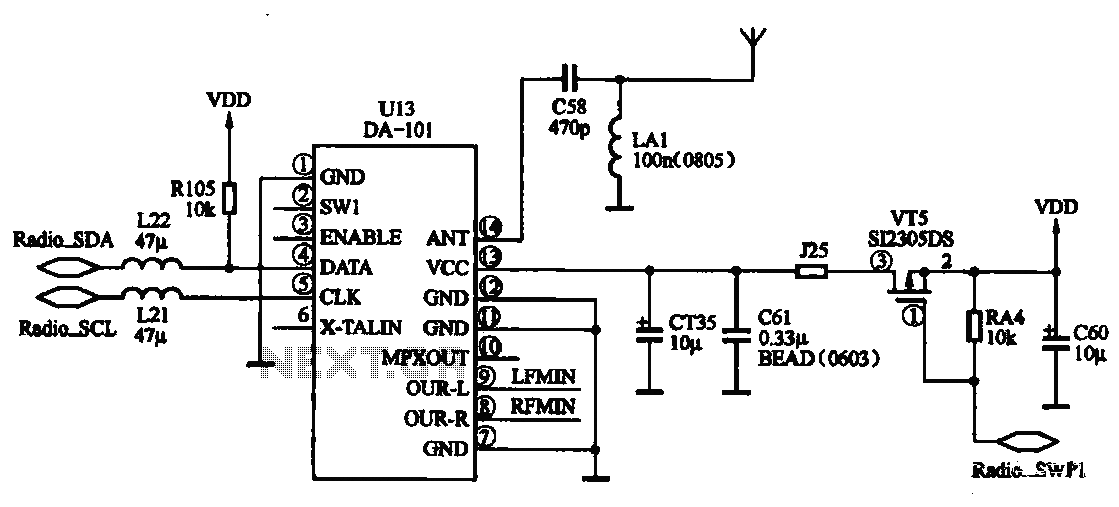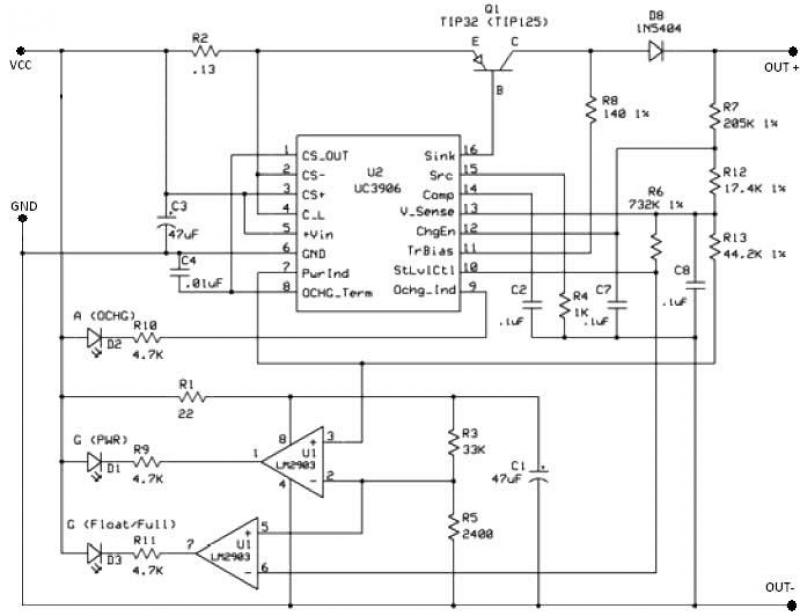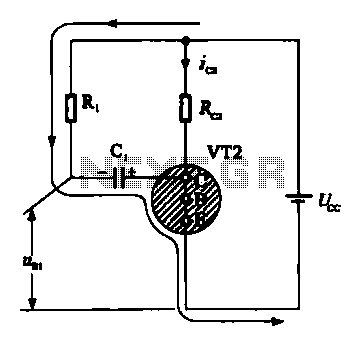
Oscillator circuit
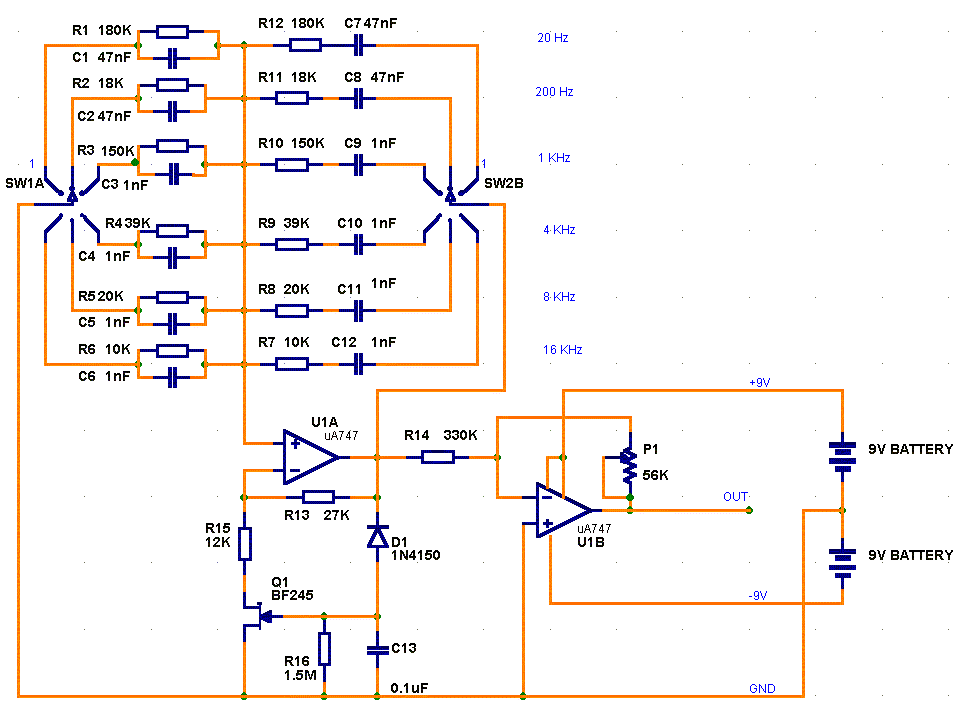
This circuit is a low-frequency Wien bridge sinusoidal oscillator designed for the audio range, characterized by very low distortion, making it suitable for testing various audio equipment. The circuit has undergone thorough testing, and a printed circuit board (PCB) is available for convenient assembly of all components. It employs a single integrated circuit along with several passive components, capable of delivering over 15 V peak-to-peak or 5 V RMS with distortion levels below 0.1%. Additionally, a FET transistor is utilized to control the output amplitude, ensuring a flat response across the frequency range. The design incorporates a single uA747 chip, which contains two operational amplifiers. The first operational amplifier (U1A) is configured as a Wien bridge oscillator, providing low distortion. A rotary switch (SW1A, B) allows for the connection of six different resistors and capacitors, enabling the selection of six distinct audio frequencies. The operating frequency can be easily adjusted using a specified formula. The second operational amplifier (U1B) functions as an inverting output amplifier, isolating the circuit from the load and amplifying the output signal to 15 V peak-to-peak. For those interested in constructing the Wien bridge oscillator, a professionally manufactured PCB and a complete kit containing all necessary components are available. The PCB is compact, designed to accommodate all parts.
This Wien bridge oscillator circuit is particularly valuable for audio testing applications due to its ability to generate stable sine wave signals with minimal distortion. The low distortion characteristic is critical in ensuring accurate testing and evaluation of audio equipment, as it allows for a clean signal that does not introduce additional artifacts.
The operation of the Wien bridge oscillator relies on the precise balance of resistive and capacitive components, which are adjustable via the rotary switch. This flexibility in frequency selection allows the user to test audio equipment across a range of frequencies, from bass to treble. The use of the uA747 integrated circuit simplifies the design while providing reliable performance. The dual op-amp configuration allows for efficient signal generation and amplification, ensuring that the output maintains integrity even when driving varying loads.
The incorporation of a FET transistor in the design serves a dual purpose: it regulates the output amplitude and helps maintain a consistent output across the selected frequency range. This feature is particularly advantageous when testing equipment that may have varying input sensitivities.
The PCB design is compact and thoughtfully laid out to facilitate easy assembly of the circuit components. This professional-grade PCB, along with the complete kit, provides an accessible solution for engineers and hobbyists looking to build their own Wien bridge oscillator. The availability of a pre-manufactured board significantly reduces assembly time and potential errors associated with manual circuit construction.
In summary, this low-frequency Wien bridge sinusoidal oscillator represents a robust solution for audio testing, combining high performance with user-friendly features. Its design and component selection reflect a careful consideration of the needs of audio engineers, making it a valuable tool in the field.It is a low frequency Wiew bridge sinusoidal oscillator for the audio range with very low distortion, useful to test a variety of audio equipments. The circuit has been fully tested and a PCB circuit board is available to easily mount all components.
The circuit uses only one integrated circuit, some passive components and is able to provide more than 15 V peak-to-peak or 5V RMS with a distortion less than 0. 1%. In addition it uses a FET transistor to control the output amplitude and maintain it flat across the frequency range. The circuit has been designed to use a single uA747 chip that includes two op-amps inside. The first op-amp (U1A) is configured as a Wiew bridge oscillator with very low distortion. The rotary switch SW1A, B provides the connection to six different resistances and capacitor couples to cover six different audio frequencies.
The operating frequency can be easily changed using the formula in 1. The second op-amp U1B is used as an inverting output amplifier to decouple de circuit from the load and increase the output signal up to 15 Volt peak-to-peak. For those that would like to build the Wiev bridge oscillator, a professional made PCB and a complete kit with all parts is available.
The PCB is small and able to accommodate all components. 🔗 External reference
This Wien bridge oscillator circuit is particularly valuable for audio testing applications due to its ability to generate stable sine wave signals with minimal distortion. The low distortion characteristic is critical in ensuring accurate testing and evaluation of audio equipment, as it allows for a clean signal that does not introduce additional artifacts.
The operation of the Wien bridge oscillator relies on the precise balance of resistive and capacitive components, which are adjustable via the rotary switch. This flexibility in frequency selection allows the user to test audio equipment across a range of frequencies, from bass to treble. The use of the uA747 integrated circuit simplifies the design while providing reliable performance. The dual op-amp configuration allows for efficient signal generation and amplification, ensuring that the output maintains integrity even when driving varying loads.
The incorporation of a FET transistor in the design serves a dual purpose: it regulates the output amplitude and helps maintain a consistent output across the selected frequency range. This feature is particularly advantageous when testing equipment that may have varying input sensitivities.
The PCB design is compact and thoughtfully laid out to facilitate easy assembly of the circuit components. This professional-grade PCB, along with the complete kit, provides an accessible solution for engineers and hobbyists looking to build their own Wien bridge oscillator. The availability of a pre-manufactured board significantly reduces assembly time and potential errors associated with manual circuit construction.
In summary, this low-frequency Wien bridge sinusoidal oscillator represents a robust solution for audio testing, combining high performance with user-friendly features. Its design and component selection reflect a careful consideration of the needs of audio engineers, making it a valuable tool in the field.It is a low frequency Wiew bridge sinusoidal oscillator for the audio range with very low distortion, useful to test a variety of audio equipments. The circuit has been fully tested and a PCB circuit board is available to easily mount all components.
The circuit uses only one integrated circuit, some passive components and is able to provide more than 15 V peak-to-peak or 5V RMS with a distortion less than 0. 1%. In addition it uses a FET transistor to control the output amplitude and maintain it flat across the frequency range. The circuit has been designed to use a single uA747 chip that includes two op-amps inside. The first op-amp (U1A) is configured as a Wiew bridge oscillator with very low distortion. The rotary switch SW1A, B provides the connection to six different resistances and capacitor couples to cover six different audio frequencies.
The operating frequency can be easily changed using the formula in 1. The second op-amp U1B is used as an inverting output amplifier to decouple de circuit from the load and increase the output signal up to 15 Volt peak-to-peak. For those that would like to build the Wiev bridge oscillator, a professional made PCB and a complete kit with all parts is available.
The PCB is small and able to accommodate all components. 🔗 External reference
